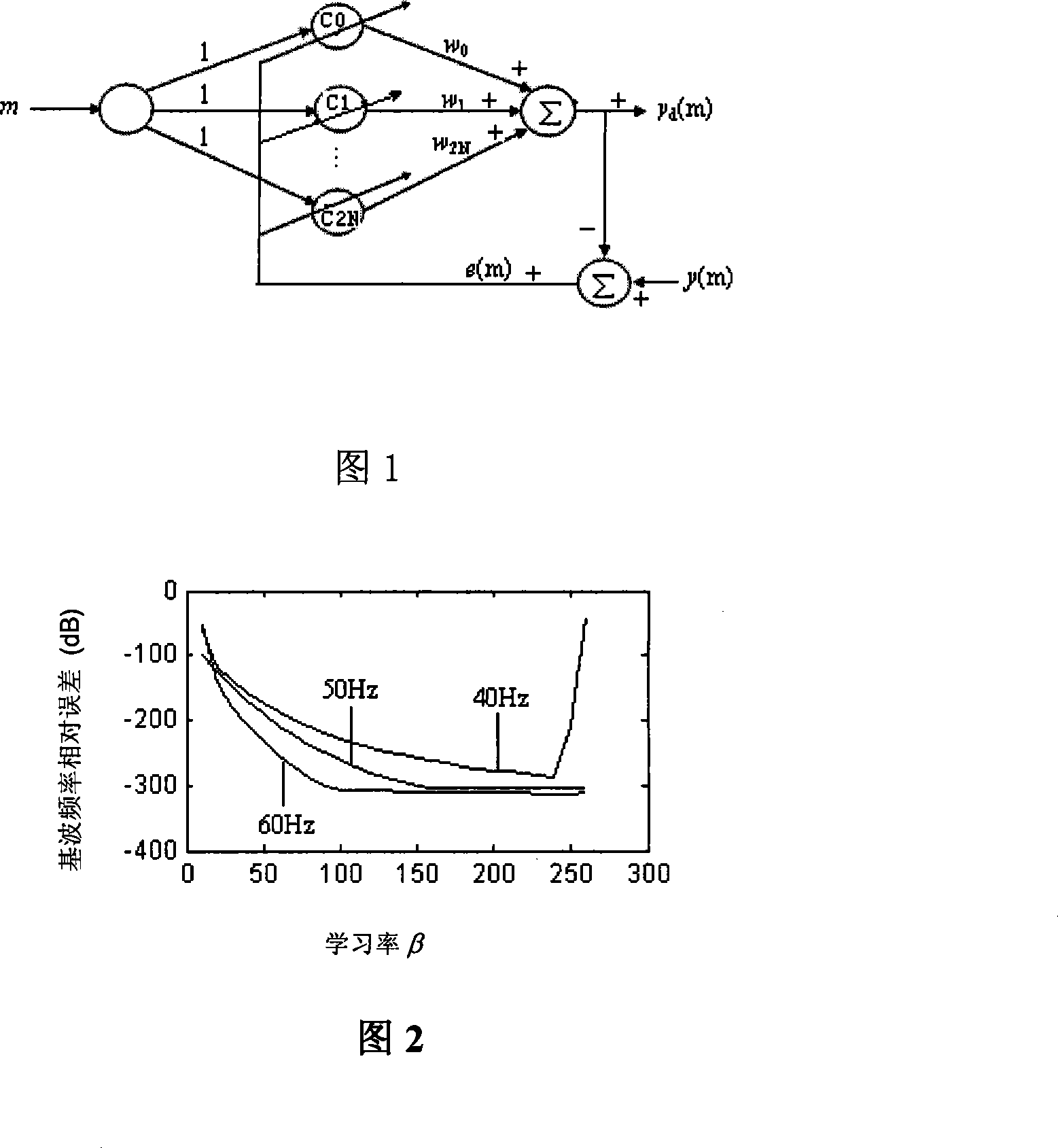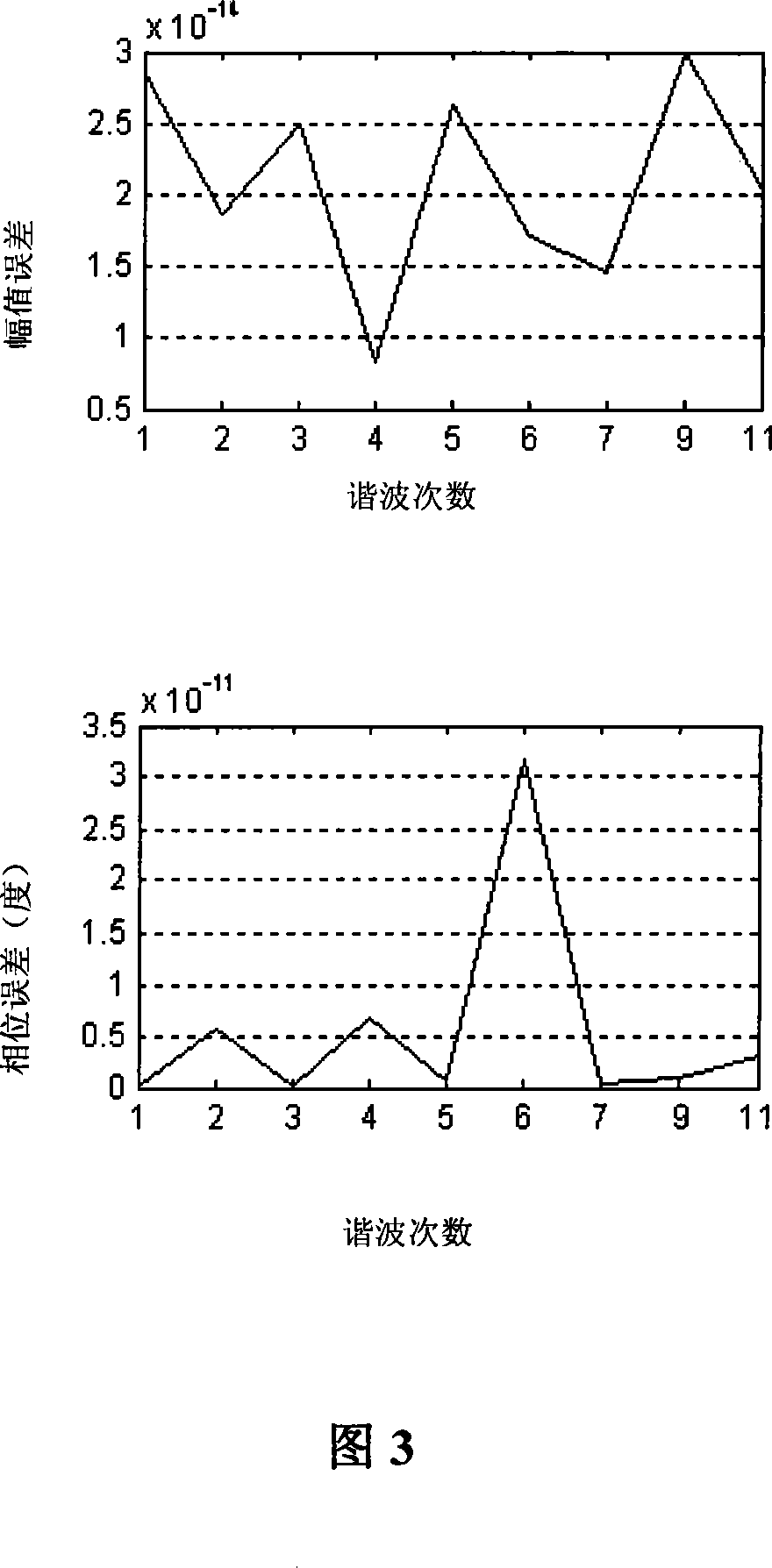Non-sine periodic signal real time high precision detection method
A periodic signal and detection method technology, applied in the field of signal processing, can solve problems such as large amount of calculation and poor precision, and achieve the effect of wide application prospects
- Summary
- Abstract
- Description
- Claims
- Application Information
AI Technical Summary
Problems solved by technology
Method used
Image
Examples
example 1
[0057] Example 1: Signal to be analyzed:
[0058]
[0059] Among them, the fundamental frequency f 1 The frequency of other harmonics is an integer multiple of the fundamental frequency, the sampling frequency is 1000Hz, and the number of sampling points is 80 points. The amplitude (unitless value) and phase of the fundamental wave and each harmonic are shown in the table 1. Send the rated power frequency of 50Hz and the sampled values to the neural network for training, and the measured frequency, amplitude and phase of the fundamental wave and each harmonic can be obtained at one time. Table 2 shows the harmonic frequency, amplitude, phase and its error relative to the true value obtained by using the neural network algorithm of the present invention. It can be seen from the simulation analysis results that the harmonic measurement method proposed by the present invention has good adaptability to frequency fluctuations, and the calculation accuracy of the amplitude an...
example 2
[0066] Example 2: For the analysis signal of Example 1, let the fundamental frequency vary from 40 to 60 Hz. In order to test the effectiveness of the improved neural network analysis method for non-sinusoidal periodic signal detection of the present invention on non-synchronously sampled discrete signals, we specify a sampling frequency of 1510 Hz and a discrete data length of 40 sampling points. Now consider the fundamental frequency of the actual signal is 40Hz, 50Hz, 60Hz and other three situations, in the actual three fundamental frequency conditions, with the specified sampling frequency and data length, it is obviously in the situation of asynchronous sampling and non-full cycle truncation . Let ε=10 -29 , η=0.0227, fundamental initial angular frequency ω 0 =100π. First, analyze the sensitivity of the learning rate β to the estimated value of the fundamental frequency under the above three actual fundamental frequencies, as shown in Figure 2. It can be seen from the...
PUM
 Login to View More
Login to View More Abstract
Description
Claims
Application Information
 Login to View More
Login to View More - R&D
- Intellectual Property
- Life Sciences
- Materials
- Tech Scout
- Unparalleled Data Quality
- Higher Quality Content
- 60% Fewer Hallucinations
Browse by: Latest US Patents, China's latest patents, Technical Efficacy Thesaurus, Application Domain, Technology Topic, Popular Technical Reports.
© 2025 PatSnap. All rights reserved.Legal|Privacy policy|Modern Slavery Act Transparency Statement|Sitemap|About US| Contact US: help@patsnap.com



